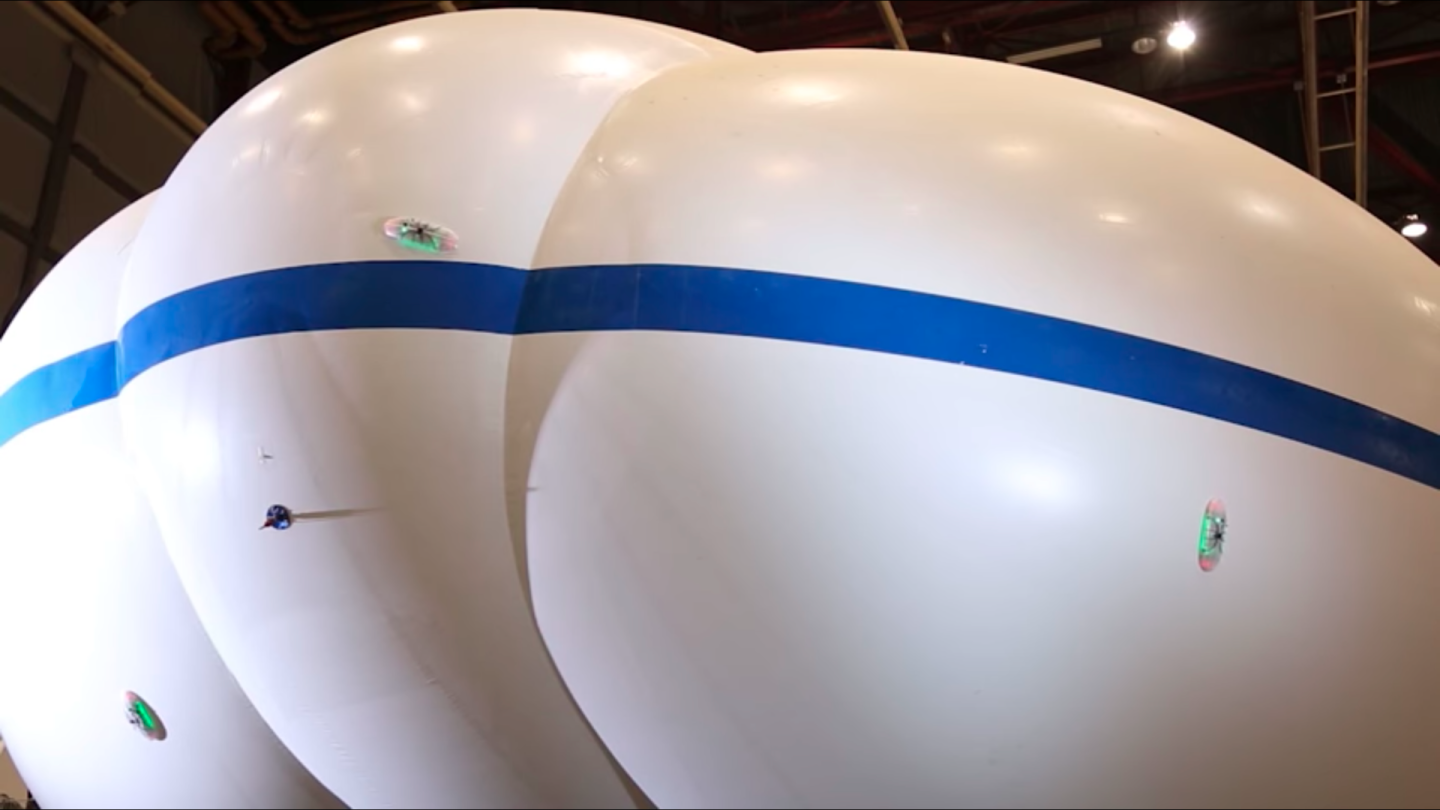Lockheed Martin's Hybrid Airship is one beast of a heavy hauler. Naturally, maintaining a vehicle almost as long as a football field takes a lot of man hours, but the company has a new little helper on deck. Its Spider robot combs the surface of the aircraft on the lookout for tiny holes before patching them up, thereby automating one of the staff's more tedious tasks.
At present, locating tiny pinholes in a gigantic airship takes crews of workers on the inside and out, armed with a bright light to identify the parts of the surface in need of attention. But Lockheed Martin's Spider (Self-Propelled Instrument for Damage Evaluation and Repair) does much the same thing, entirely on its own.
The robot is actually split into two halves, which lock in magnetically on either side of the airship's outer skin. The half on the outside applies a light to the surface, which shines through to the interior in the event of a hole, where the inner half is waiting with its light sensors to pick up the breach.

When Spider has detected a hole, the robot lines up its patching mechanism and automatically repairs it. It then sends a before and after image of the repair job to a central processing unit. The company plans to use squads of Spider robots, where this central hub would manage their activity as they scoot across the airship. If one fails, it can reconfigure search patterns to make sure no hole is left unplugged.
You can see Spider do its thing in the video below.
Source: YouTube













